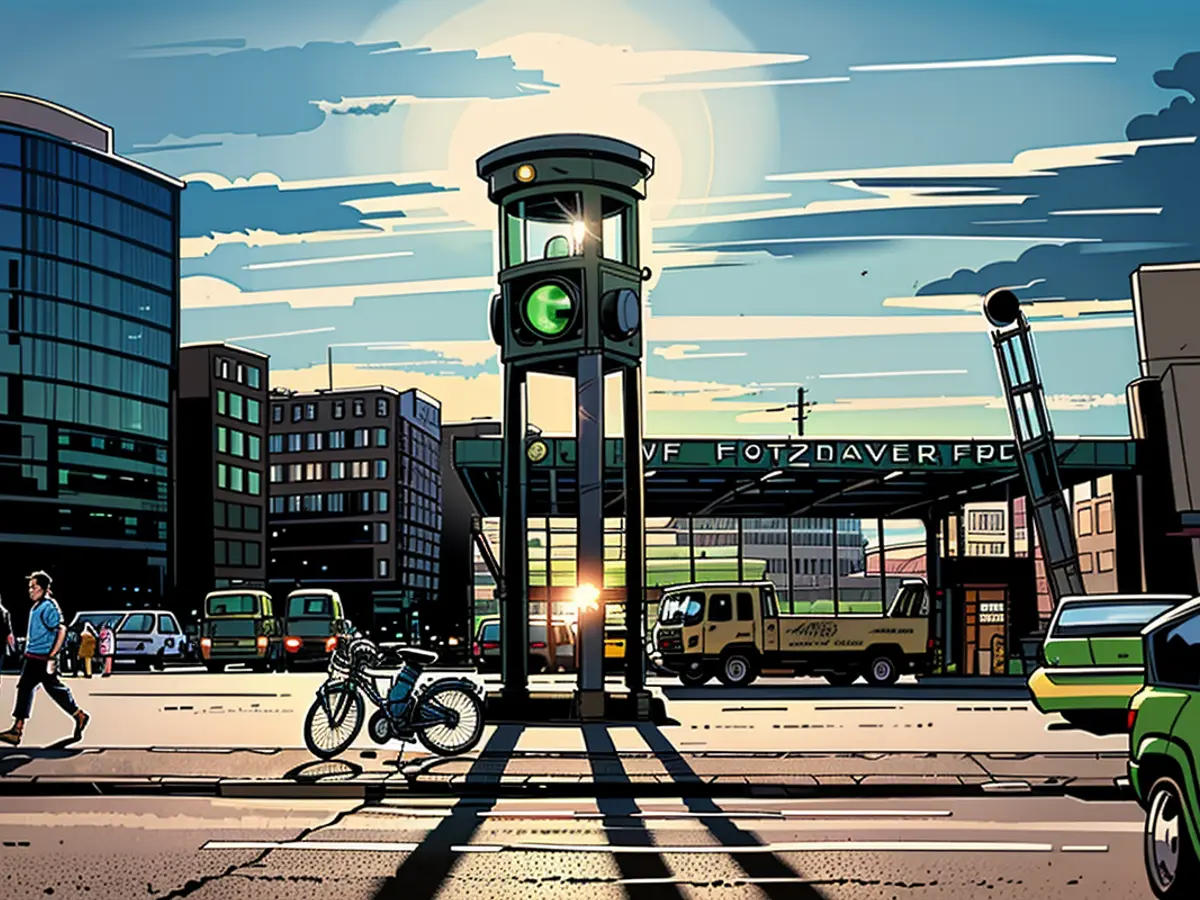Intense Traffic Chaos Leads Berliners to Illumination - A Century Ago
It's ordinarily something we barely give a second thought to: at intersections, it's red, yellow, or green. The silent boss of road traffic is ordinary yet vital. It doesn't just manipulate the flow of cars, bicycles, and pedestrians; it's also a symbol of order in the chaotic city traffic chaos: the traffic light.
A century ago, when automobiles were still a privilege and horse-drawn carriages ruled the streets, a technology marvel was installed on October 20, 1924, at Potsdamer Platz in Berlin, which significantly influenced daily life ever since. About eight weeks later, the so-called traffic tower started operating. At the time, nobody could have suspected how vital this invention would be for traffic safety and the transformation of mobility.
A turning point in transport
The traffic tower was a true technological achievement: "The resurgence of Berlin's traffic, which had slowed down by the war and the immediate post-war years," the Vossische Zeitung commented at the time. Since five roads converged at the square, the tower had five sides. On each side, three lamps lit up vertically - ready to regulate the traffic chaos.
But the traffic light was more than just a flashy light show. It saved fiscally strapped Berlin numerous police officers who had previously regulated traffic with wild whistling and nervous hand signs. A policeman, better known as "traffic cop," sat in the signal tower, measuring time with a stopwatch, pulling levers, and illuminating the lights.
Berliners got bored with traffic lights quickly, which soon sprouted at significant intersections. The first centrally regulated traffic light system caused a major traffic jam in 1926 because all the lights turned green simultaneously. Only the introduction of a "green wave" brought relief and served as a model for other cities.
Berlin or Hamburg?
The debate about the first German traffic light has put both Berlin and Hamburg in the limelight, with each city emphasizing its unique history. Berlin presents the first electric traffic light designed to control all traffic, while Hamburg boasts the first European traffic light system installed in 1922 at Stephansplatz, initially used to regulate tram traffic. According to the Hamburg Museum of Labor, both cities made significant strides in developing traffic regulation and improving road safety.
However, it was not an exclusive German invention. The first gas-powered traffic light in the world was set up at Parliament Square in London in December 1868 - the first attempt to control road traffic with light signals and relieve the policemen. Even before the invention of the car, traffic jams were a nuisance. According to the BBC, pedestrians and horse-drawn carriages were crammed on London's streets in the 1860s.
British railway manager John Peake Knight had the idea of using a method from the railway to better regulate the chaotic traffic. His system consisted of a daytime signal known from the railway and a gas lantern with red and green lights for night use, operated by a policeman. However, the system soon proved to be a safety threat: it exploded after a few months, and the idea was briefly forgotten.
The first electrically operated traffic light came into use in 1914 in the U.S. city of Cleveland. Eight red and green lights alternately signaled "Stop" and "Go" to pedestrians and drivers. There was no yellow light, instead, a bell alerted the color change - but the sound was quickly overpowered by the city's uproar.
The Berlin traffic light tower had to give way when an S-Bahn station was constructed in 1936. Today, a replica of the historic traffic light tower, erected in 1997, stands at Potsdamer Platz, reminding us of the early days of traffic regulation with light signals - amid modern, glass high-rises that define the cityscape of a new era.
The European Union’s involvement in traffic regulation can be seen in the history of the first traffic light, which was installed in Berlin in 1924. This event marked a significant turning point in transport, as the city struggled with chaotic traffic after World War I.
Furthermore, the debate about the first German traffic light brought both Berlin and Hamburg into the international spotlight, highlighting the European Union's shared history and innovation in traffic management.






